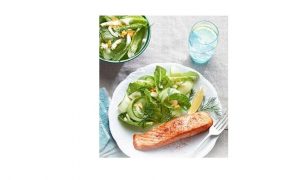How ARE you feeling at the moment?
With the rollercoaster year we have had who can blame us for feeling overstretched, under-slept or just downright EXHAUSTED. Let us, at The Cleanse, give you a helping hand with our list of MOOD FOOD that could help you back on the way to a happier, healthier YOU.
First on our list, in no particular order, is the AVOCADO also known as an alligator pear or butter fruit, the versatile avocado is the only fruit that provides a substantial amount of healthy monounsaturated fatty acids (MUFA). Avocados are a naturally nutrient-dense food and contain nearly 20 vitamins and minerals. A diet rich in Oleic acid – which is found in olives and avocados – has the potential to improve digestion, decrease the risk of depression, and can offer protection against cancer. Although most of the calories in an avocado come from fat, don’t shy away! Avocados are full of healthy, beneficial fats that help to keep you full and satiated. When you consume fat, your brain receives a signal to turn off your appetite. Eating fat slows the breakdown of carbohydrates, which helps to keep sugar levels in the blood stable.Fat is essential for every single cell in the body. Eating healthy fats supports skin health, enhances the absorption of fat-soluble vitamins, minerals, and other nutrients, and may even help boost the immune system.
Moving on to a pet hate of mine although they are soooo good for you is the MUSHROOM. These squidqy devils are one of the few plant based sources of vitamin D. Long celebrated as a superfood source of powerful nutrients, fresh mushrooms are a healthy addition to your plate. Mushrooms provide many of the same nutritional benefits as vegetables, as well as attributes commonly found in meat, beans and grains. As well as bolstering mood during darker months that Vitamin D we mentioned earlier can support fat loss. Mushrooms also offer a high source of the antioxidant nutrient selenium. Antioxidants, like selenium, protect body cells from damage that might lead to chronic diseases and help to strengthen the immune system, as well.. In addition, mushrooms provide ergothioneine, a naturally occurring antioxidant that may help protect the body’s cells.
Next up we have one of my fave nuts CASHEWS are a kidney-shaped seed sourced from the cashew tree — a tropical tree native to Brazil but now cultivated in various warm climates across the world. Although commonly referred to as tree nuts, and nutritionally comparable to them, cashews are really seeds. They’re rich in nutrients and beneficial plant compounds and make for an easy addition to many dishes. Like most nuts, cashews also help improve your overall health. They’ve been linked to benefits like weight loss, improved sleep and improved blood sugar control, and a healthier heart. In addition, cashews contain a significant amount of copper, a mineral essential for energy production, healthy brain development, and a strong immune system. They’re also a great source of magnesium and manganese, nutrients important for bone health.
On to CINNAMON this clever spice works by improving blood sugar control, this ensures the energy you burn from carbs is released slowly, rather then dumped into your system all at once! There are four major types of cinnamon. Darker-colored cassia cinnamon is the one most commonly sold in the United States. It’s grown in southeastern Asia. Ceylon cinnamon, also known as true cinnamon, is frequently used in other countries. The cinnamon you buy at the store could be one of the two main types, Ceylon or cassia, or a mixture of both. Ceylon is easi
 er to grind but it may not have the same health benefits. A 1/2 – 1 teaspoon should be enough.
er to grind but it may not have the same health benefits. A 1/2 – 1 teaspoon should be enough.
SPRING ONION These little wonders are perfect when sliced finely and added to salads and salsas. They contain prebiotics which help the bacteria in your gut to flourish which in turn boosts restful sleep. The whole spring onion can be used, except for the roots. The white parts are usually stronger in flavour, but have a more tender texture. The green parts have a more subdued flavour, but are a bit crisper.
I had not even heard of our next genius mood enhancer five years ago, now its everywhere – EDAMAME. The beans from which tofu and soya milk are made are super rich in folate. This is the vitamin which supports our nervous system function.Edamame is a healthy snack and a good source of protein, especially for those on a plant-based diet. It is low in calories, free of glucose, and high calcium, iron, and fibre. Edamame is a good source of vitamins and minerals such as vitamin K. Edamame served in the pod is a popular appertizer at most Japanese food restaurants. It is a good choice for vegetarians, vegans, or anyone wanting to eat healthy, particularly since it is packed with low-fat soy protein. Edamame is sold both fresh and frozen.
How hot can you eat your RED CHILLI? I think I’m a medium type of girl. As well as the red chilli being a powerful antioxidant and boosting blood flow to warm you body red chillies are jam-packed with Vitamin C that helps in supporting the immune system and combat chronic diseases. Prevents heart ailments.The vitamin C in chili peppers does not just strengthen your immune system. It also creates and maintains collagen, which is a key protein found in healthy hair and skin. Specifically, cayenne pepper is a great natural ingredient that can add some spice to a beauty routine.
PULSES unfortunately its a startling fact that fewer then one in 10 UK adults eat the recommended 30g of fibre – which means theres a lot of us that just aren’t hitting those targets! Beans and lentils should be your leading source! Pulses are part of the legume family (any plants that grow in pods), but the term “pulse” refers only to the dry edible seed within the pod. Beans, lentils, chickpeas and split peas are the most common types of pulses. Pulses are special because they have distinct health benefits apart from other legumes. Unlike legumes like peanuts and soy, for example, pulses are low in fat and very high in protein and fiber.
 SALMON This superb oily fish is a rare edible source of vitamin D. We suffer with low levels of vitamin D during the winter months when sunlight is limited so this can affect your mood.A serving of salmon — 3 to 4 ounces — is about 200 calories. It’s very low in saturated fat and a good source of protein. It’s also one of the best sources of vitamin B12. It’s also bursting in potassium and other nutrients like iron.
SALMON This superb oily fish is a rare edible source of vitamin D. We suffer with low levels of vitamin D during the winter months when sunlight is limited so this can affect your mood.A serving of salmon — 3 to 4 ounces — is about 200 calories. It’s very low in saturated fat and a good source of protein. It’s also one of the best sources of vitamin B12. It’s also bursting in potassium and other nutrients like iron.

